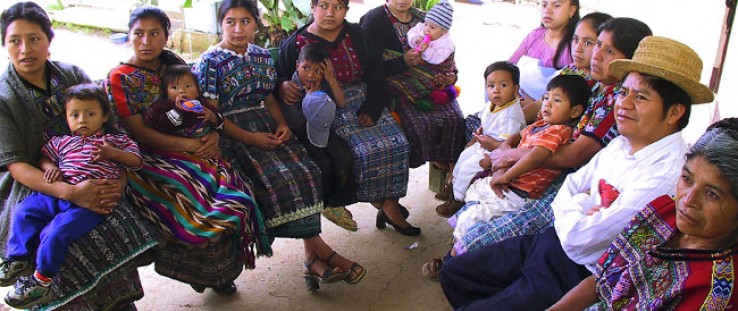 Mayan women and a husband receive family planning counseling at the health center in Chimaltenango, southern Guatemala.
ELENA HURTADO, URC
Mayan women and a husband receive family planning counseling at the health center in Chimaltenango, southern Guatemala.
ELENA HURTADO, URC
 Mayan women and a husband receive family planning counseling at the health center in Chimaltenango, southern Guatemala.
ELENA HURTADO, URC
Mayan women and a husband receive family planning counseling at the health center in Chimaltenango, southern Guatemala.
ELENA HURTADO, URC
In rural Guatemala, it is not unusual for women to have as many as seven children. Though this is not a new trend, such a large number of children born to poor families today can become a greater burden than in earlier years. This is due to several factors, including food insecurity, which has risen to crisis levels in Guatemala, making it a USAID priority country.
Guatemala is one of the most inequitable countries in the world. Three-fourths of the rural population is poor, and the majority of poor live in the Western Highlands, where one-fifth to two-fifths of the people are classified as living in extreme poverty. In addition, approximately 80 percent of indigenous people live in poverty compared to just under half of non-indigenous, according to the 2009-2010 U.N. Development Program’s Human Development Report for Guatemala.
The U.S. Government’s Feed the Future program and the Global Health Initiative (GHI) are playing particularly crucial roles in the Western Highlands. Here, where the majority of the indigenous Mayan people live, residents are malnourished, have high levels of hunger and maternal and infant mortality, and low levels of contraceptive use.
In the Western Highlands and in the more than 20,000 other small, rural Guatemala communities—with populations less than 2,000—at least 23 different languages are spoken. Communicating about critical issues like health care, nutrition, and food security is no small task.
Moreover, in the past, having many children meant more hands to work the land. But new generations have divided plots of land into smaller and smaller parcels. There is less food to harvest. And with larger families comes more mouths to feed. As a result, nearly half the population of Guatemala suffers from chronic malnutrition.
Add to both these issues the rise in food prices across the globe: The United Nations Food and Agricultural Organization (FAO) says the cost of food is at an all-time high since the organization began keeping records in 1990, with its food price index increasing 2 percent between January and February 2011 alone. FAO’s monthly report for March says the cost of maize, a staple crop in Guatemala and other parts of Central America, rose 35 percent in the country over the previous three months.
In Guatemala, around half of all children are stunted. “And that means if you just put them against a wall and draw a line, they are, on average, significantly shorter than they should be for their age. And that is reflective of … a certain type of chronic nutritional deficiency,” said USAID Administrator Rajiv Shah.
The Factor They Can Control
Despite rising food prices and the reality of shrinking farm sizes, there is at least one factor that the average Guatemalan can control: family size. There has been a consistent correlation in the National Maternal and Child Health Surveys conducted every five years since 1997 between family size and child health status. For instance, data from the 2008-2009 survey show that when there are one or two children in the family, they are better nourished, they get sick less often, and when they are sick, the mothers are more likely to seek health care than when there are more than four children in the family.
The U.S. Government’s Global Health Initiative (GHI)—the Obama administration’s multi-year, interagency effort aimed at improving and saving lives by strengthening health systems—is working with local organizations to help them inform women and men about contraceptive choices and the importance of spacing their children’s births.
Additionally, USAID is working with Guatemalan Government officials to make other family planning information more accessible to more couples who want it. These services are scarce in Guatemala, which may be one of the reasons the country has the highest fertility rate in Latin America. Contraceptive use is especially low among Mayan women, most likely due to a mix of historical, cultural, and political barriers.
With USAID support, the Ministry of Health is now providing information and access to contraceptives. Recent policy efforts in Guatemala have also led to additional funding for reproductive health programs, as well as a law to provide universal access to family planning.
As Dr. Yma Alfaro, USAID’s reproductive health officer, explains: “Under the GHI strategy, with its emphasis on women, girls, and gender equity, we are making renewed efforts to address the unmet need for family planning services among the underserved populations of the Western Highlands by ensuring that education materials and activities are in Mayan languages, that men are included in the education and advocacy efforts for birth spacing and improved reproductive and maternal health services at local clinics, and that adolescent girls and boys have access to information and reproductive health services before the first pregnancy occurs.”
As more couples learn about reproductive health and family planning, Guatemalan families become healthier and stronger, according to research findings. Study after study shows that when total fertility rates decrease, the health and welfare of children, families, and the overall community increases.
Malnutrition Break
Preventing chronic malnutrition, chiefly through promoting nutrition and hygiene practices as well as agricultural development, is another one of the key GHI focus areas in the small Central American country.
In San Isidro, in the Western Highlands, a cadre of local women is becoming involved in the agricultural production process—something rare before the effort began in 2007.
The women wash and pack vegetables from a farming collective plantation for distribution and sale in Walmart stores in Guatemala and other Central American countries. Spurred on by the experience, the women have taken some of the lessons home with them. Many are now planting kitchen gardens with crops not traditionally grown in the community—beets, radishes, carrots, chard, cilantro, and some local, traditional greens—as a way to improve their families’ diets. They have also coordinated cooking classes among themselves to share new recipes.
Three years ago, Doña Delma Gomez was one of the first women to start working with the collective and now, at 32 years old, she is an active member. She and her husband have four children, the youngest of whom is 4 years old. Gomez said that before being involved in the project, she spent all of her time at home doing housework and taking care of her children because there were no places in the community where women could work.
“The project has been a huge benefit because before we didn’t have any opportunity to work and earn money,” Gomez said. “Now with what I earn at the packing center, I have been able to improve what my children eat. Now I can buy more fruit and other vegetables that we don’t grow here in our fields and there is enough for me to buy meat and other food that helps the children grow.”
Gomez estimates most of her earnings—around 70 percent—go to purchasing food for the family. She also said that her children are sick much less often now and seem to be growing faster as well.
But it is not only health and food security that improve when USAID’s core initiatives in these areas intersect.
In his recent testimony in front of congressional appropriators, Shah cited the Guatemala Walmart Partnership as a model of how introducing large communities of poor farmers into global value-chain networks has residual effects on societies.
“[When I was last in Guatemala], I visited a village where they told me that three years ago there were 20 kids in school. And, now today, because of that partnership with USAID and Walmart, they had a demand for 500 kids to go to school,” Shah explained. “And that’s because when women farmers earn income, the very first thing they do is invest that income in the health and education of their children. And it just demonstrates how we can move communities out of poverty into a place of stability in a way that’s far more efficient than dealing with consequences.”







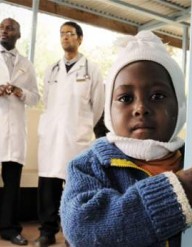


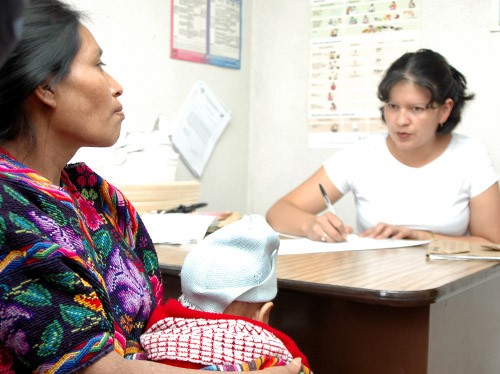
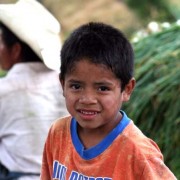
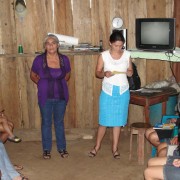
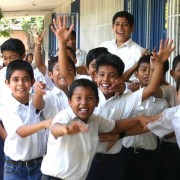
Comment
Make a general inquiry or suggest an improvement.